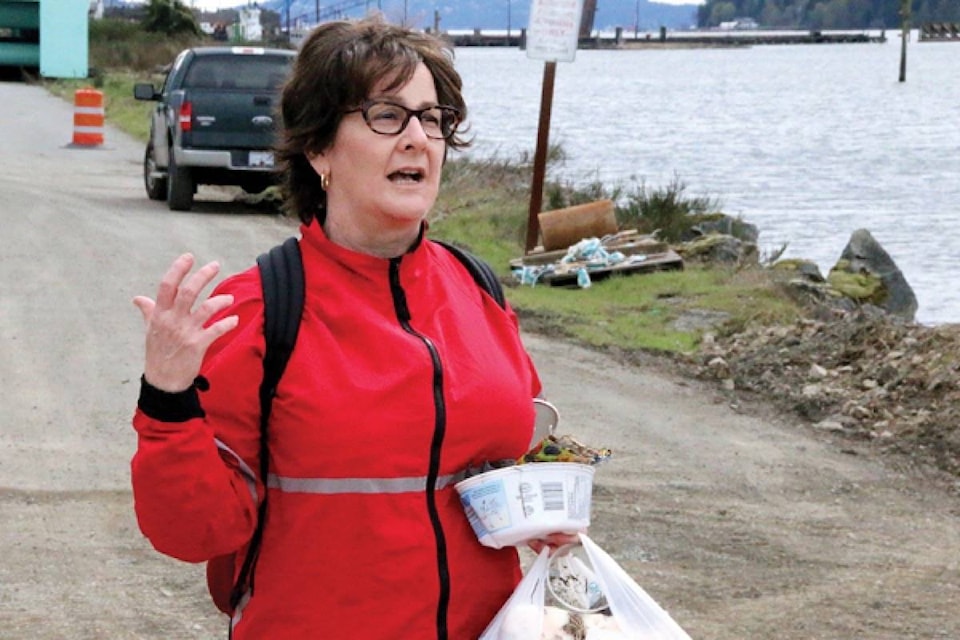The Cowichan estuary, a place close to my own heart, is treasured by our community. Residents identified the health of the estuary as a top priority in Cowichan Bay’s Official Community Plan. The bay’s agricultural and maritime economies and the creation of “living wage” jobs in the community were also identified as OCP priorities. As area director for Cowichan Bay – Area D, my work with the community on bylaws that align with these goals, and with local, provincial and federal regulations to protect our waters, is ongoing. Continued community engagement is important.
The estuary’s been the site of industrial activity and shipping since the early 1900s. Farming’s been practised in the watershed for as many years. On the Cowichan Watershed Board I’ve worked to eliminate agricultural, industrial and other sources of pollution in the bay so shellfish can be safe to eat again. We’re making progress and it takes time. Our best conservation and restoration successes have been achieved through education and collaboration with local environmental groups, citizens, farmers and local industry. The Watershed Board supported farmers to adopt environmental management plans to keep run-off out of the estuary. We work with industry to ensure waste is contained and removed and doesn’t end up in our waters. With the Cowichan Land Trust we’ve had success in restoring eelgrass.
In 2012 a cease-and-desist order was needed to stop industrial pollution from boat repair and fish-farm platform construction on the estuary’s southern shores. Cowichan Tribes and the CVRD transformed this site into a green space and kayak launch next to a CVRD/Land Trust beach restoration.
Since then industrial activity in Cowichan Bay has been confined to the “marine industrial” area designated in the bylaws. Western Stevedoring holds the long term lease there. They sublease to an oil spill recovery company and to Pacific Industrial Marine, a local business that’s the area’s largest employer, with 50-plus employees. They build floating docks, including bridges and docks that let light into the water in a way that allows eelgrass and marine life to flourish rather than die. The kayak launch ramp and dock at Cowichan Bay’s Marine Gateway were built by Pacific Marine, chosen by CVRD for these ecological attributes. Pacific Marine hired a biologist to map the eelgrass adjacent to their worksite to ensure transporting their bridges and docks by water doesn’t disturb ecologically sensitive areas.
Western Stevedoring and Pacific Marine have environmental policies in place, are climate-smart-business-certified, and support environmental stewardship in the bay. They’ve removed derelict vessels, assisted Cowichan Tribes with the necropsy of a deceased whale and helped care for Chinook fry. They support the work of the Cowichan Valley Naturalists, the Cowichan Estuary Restoration and Conservation Association and other groups, including breaching the causeway to support salmon migration and creating nature trails. Until the recent zoning inquiry came forward, the CVRD had not received any concerns about their operations.
Western Stevedoring has now applied for a bylaw amendment to include the current making, assembly, shipping and transportation of floats and bridges in the area’s permitted marine industrial activities. They’re also asking that the currently permitted use as a petroleum terminal facility and storing petroleum be removed from the bylaw, and that log storage no longer be allowed in the water lease to the south so it can become a conservation area. They’re also requesting storage and operation of marine safety equipment be added to allow continued support of marine disaster preparation.
As with any rezoning application, multiple opportunities for public input will be available as public hearings get underway. The process will provide opportunities for everyone’s views to be heard. The CVRD needs to consider all input to be able to act in the community’s best interest. The process generally takes about eight months.
The rezoning application is posted at the end of Dock Road. Western Stevedoring’s Rob James (250-748-5206) is happy to speak with anyone wanting more information and is willing to provide site tours. So far local citizens who’ve toured the site report that the majority of Pacific Marine’s operations, including painting and processes producing air-born dust, take place in an enclosed space. Waste is collected and trucked off-site for appropriate disposal.
As with any rezoning application, I encourage everyone to look closely at what is proposed so you can provide the CVRD with well-informed feedback and help us make the best possible decisions for Cowichan Bay and our region.
